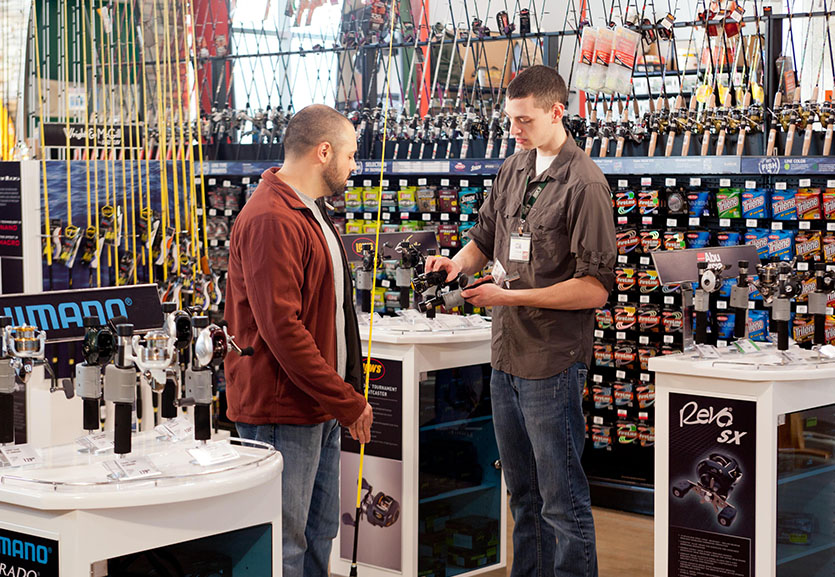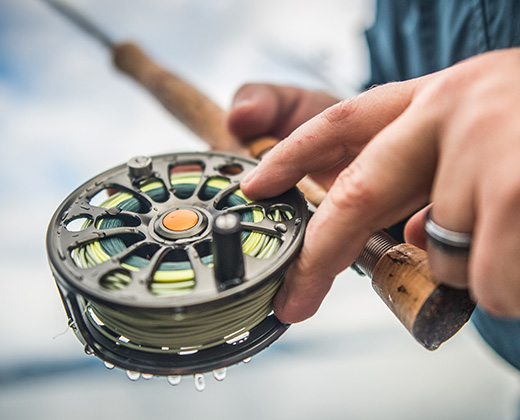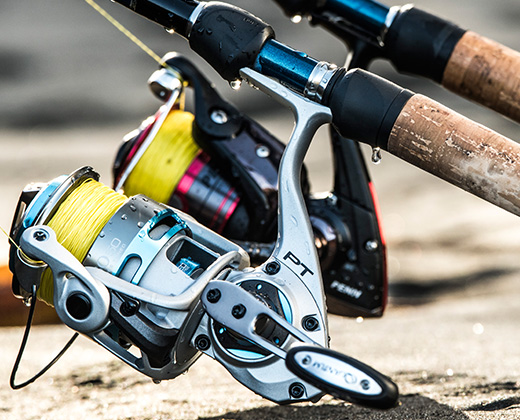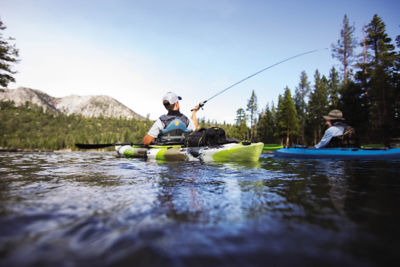How To Buy A Fishing Reel
Getting ready for a trip to the water? Choose the correct fishing reel for your outing. Whether you’re after a big steelhead or a scrappy trout, learn about these different types of fishing reels and how they can work for you.

Find Your Perfect Freshwater Or Saltwater Reel
Freshwater reels are for use around inland lakes, streams and rivers, while saltwater reels are for large bodies of water, including oceans and bays.
Reels come in three basic styles: casting, spinning and fly fishing. Whether you’re after a largemouth bass or a wiley trout, you should understand the way your fishing reel works.
Baitcasting Reels: These reels work with the weight of your bait or lure as it pulls on the line and turns the spool. More experienced anglers typically prefer baitcasting reels, especially when using heavier lures and lines for large game fish. Handles are usually located on the right-hand side of the reel.
- Most baitcasting reels incorporate a drag system, which adjusts the resistance or drag on your spool and controls the level of resistance needed to pull the right length of line off the spool.
- Many anglers prefer baitcasting reels for larger, stronger game fish like musky or smallmouth bass, particularly if they’ll be out on the water for an extended period of time. Many saltwater anglers also use baitcasting reels for species like striped bass.
- Some baitcasting reels come in one-piece designs that lessen the corrosive effects of saltwater.
These five styles of freshwater and saltwater baitcasting reels are available to fit your needs:
Spinning Reels: These devices are great for beginners or novice anglers. They are simple to use and mount on the underside of a spinning rod. The handle of a spinning reel is usually located on the left-hand side instead of the right.
- Spinning reels can handle smaller lures and baits.
- They commonly offer an anti-reverse mechanism, a simple design you can set by letting go of the bail arm after casting. This keeps your line from spooling off when you get a bite.
- You may prefer a skirted spool in saltwater environments. These increase line capacity, allowing longer casts and reducing tangles. They also protect the inside mechanisms of the spool from salt and moisture.
Spincast Reels: With these reels, the line comes off the top of the spool while casting. The spool, which runs parallel with the rod, remains enclosed by a cover that features a port, where the end of your fishing line exits the reel. The spool remains stationary until you use a thumb button to cast. As you release the button, your bait or lure will propel your line.
- The ease of spincast reels makes them a good choice for novices. They’re reliable and lack complexity.
Drag Systems
The drag system of your reel applies friction to the spool. This helps as you cast and while you are attempting to bait a fish, particularly larger species.
- Older models traditionally have a fixed drag that cannot be adjusted.
- Spring and pawl drag systems for fly fishing offer some adjustment and have a distinct clicking sound when line is pulled off the reel.
- Disc drag systems provide the smoothest type of drag. Many modern fly reels use disc drag systems.
- Adjustable disc drags allow anglers to make fine adjustments to the level of drag pressure.
There are three types of drag systems.
- Spring and pawl, or “click and pawl” systems feature a spring that pushes the prawl into a gear on the reel spool to produce a drag. Spring and pawl is best for light fishing, when targeting panfish.
- Disc drag pushes a large-diameter pad against the reel spool’s braking surface. Pressure is direct to increase overall control and efficiency. Disc drag systems use cork or synthetic materials, like Teflon. Cork provides a smoother, more consistent pressure and can be easily adjusted. These systems are great for fighting large, strong fish.
- Caliper drag systems fall between disc and spring and pawl. A caliper pad pushes against the braking surface of the spool. This friction slows the way the reel spool spins.











